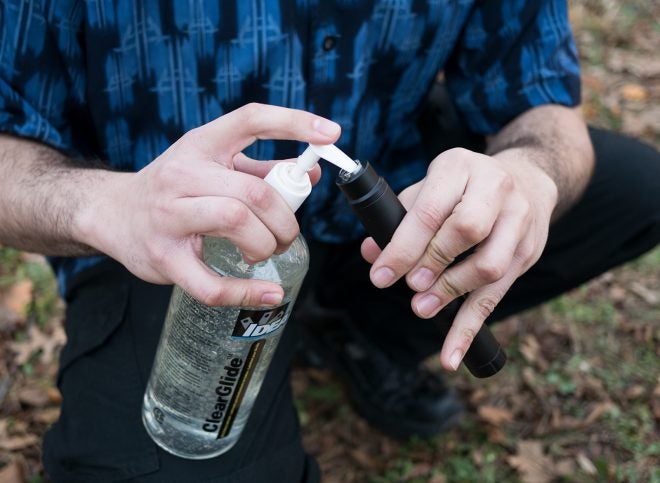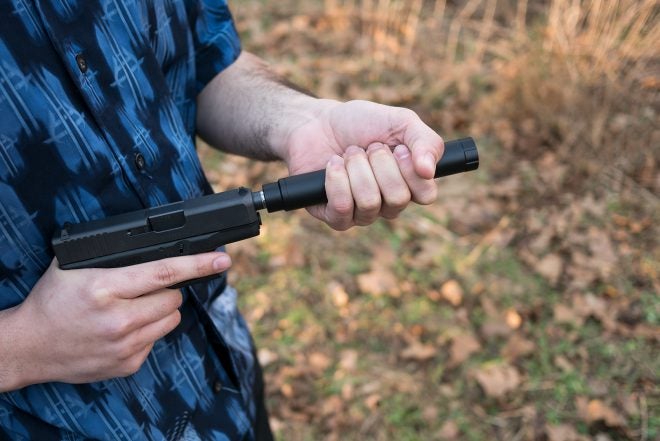How Wet Sound Suppressors Work
Oleg Volk 01.02.17

Most sound suppressors work by disrupting gas flow and by allowing gunpowder gas to expand, cooling and slowing it down. Unfortunately, that requires physical volume, reducing the portability of defensive handguns. AWC Abraxas is a more compact design, thin enough to allow the use of standard height sights and standard width holsters. With diameter just under an inch, it handles much better than 1.25-1.35″ conventional designs, but also gives up 30-40% of the volume for the same length.
To get around this limitation, the suppressor can be used wet–filled with water or gel to absorb some of the heat generated by each shot. Cooler gas is slower, therefore quieter when it finally exits. Gel is preferable, as it sticks better to the baffles instead of obstructing the central aperture through which the bullet will travel. Unlike a barrel in which liquids have no place to go, gel in the way of the bullet can displace sideways.
This design works better for offensive uses than for defense, as carrying a suppressor filled with gel can be messy. For this reason, wet designs are more commonly associated with unofficial official uses. They can also be used for home or vehicle defense, but slightly wider dry designs are more practical for that. For defense, even older designs with rubber wipes may be a better fit. Both wipes and gel have a big disadvantage: they work well for only a few shots, after which the suppressor effectiveness drops to whatever dry performance the volume and baffle shape permit. In our testing, the sound was very mild for six shots and fairly noticeable by the tenth.


